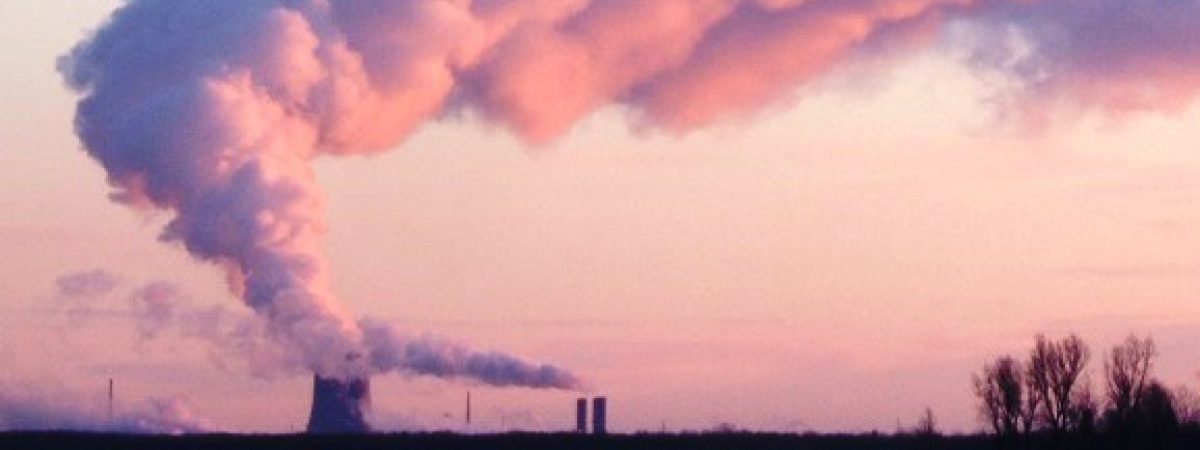The Brattle Group recently released a report entitled “Achieving New England’s Ambitious 2050 Greenhouse Gas Reduction Goals Will Require Keeping the Foot on the Clean Energy Deployment Accelerator”. The primary emphasis of this blog is on New York environmental and energy policy issues so this post applies their renewables needed estimate to the New York’s Climate Leadership and Community Protection Act (CLCPA) requirements.
In particular, the Brattle report notes that in order to reduce greenhouse gas emissions from the whole economy it will be necessary to electrify transportation and heating which will increase electric load. They estimate that in order to meet New England’s goal of an 80% reduction by 2050 that electricity demand could be “twice the current level by 2050”. I have yet to see any New York agency estimate of future load for the CLCPA so I decided to try to estimate how much renewable energy would be needed if New York electric load doubles by 2040 at the same time that New York electric load is supposed to eliminate fossil-fired generation. I used that estimate to estimate how much renewable energy capacity (MW) in the form of on-shore wind, off-shore wind and solar could be needed in New York in 2040. I determined how much power (MWh) was used in 2018, doubled that, and then guessed how the necessary capacity could be distributed between on-shore wind, off-shore wind and utility solar.
Brattle Key Findings
The Brattle Group prepared their report on behalf of the Coalition for Community Solar Access. According to the news release there were several key findings:
-
-
- Electricity will play a critical role in decarbonizing the New England economy. As a result, electricity demand will grow substantially and could well be twice the current level by 2050.
- In supplying this growing demand for power, both solar photovoltaic (PV) and offshore wind will likely play a critical role.
- Merely maintaining the current rate of clean energy resource deployment will cause the region to fall short of its targets. Currently planned clean energy resource generation for 2019–2030 in New England amounts to approximately 830 MW per year. This represents a significant increase from the historical generation of 280 MW per year from 2010–2018.
- However, to achieve the 2050 targets, New England will need to accelerate clean energy resource additions to between 4 and 7 GW per year on average between 2021 and 2050.
- To reach these levels, annual clean energy resource additions will need to continue to grow by approximately 9% per year through 2050.
-
Procedure
The first step is to determine how much generation was used in 2018. I used the 2019 NYISO Load & Capacity Report “Gold Book” Summary of Table III-3c 2018 Annual Net Energy Generation by Zone and Type to estimate 2018 energy generation by generator type and I have included a consolidated summary of data by fuel type. Note that fossil fuel accounted for 41.9% of the generation in 2018. Total load was 135,585 GWh so a 2040 doubled load will equal 271,170 GWh.
Estimating the feasibility for future development scenarios is difficult. The Projected Net Energy Generation in 2040 table lists the assumptions I made to determine how New York generation could meet the doubled load. There are three main components of the response: expand output from pumped storage and conventional hydro, maintain nuclear, and expand renewable combustion (landfill gas and municipal waste incineration); reduce load through energy efficiency, tighter codes & standards, behind-the meter (BTM) distributed solar and BTM non-solar distributed generation; and utility scale on-shore wind, off-shore wind and solar.
In the first component I estimated future generation as a function of fuel type. The CLCPA law requires that all fossil-fired electric generation be replaced by 2040 so I zeroed out potential generation in those categories. Although I have seen claims that additional hydro generation can be developed, I doubt that those resources could ever exceed a 10% increase over current levels. In 2040 I estimated that only Nine Mile 2 nuclear would be operating because all the other nuclear generating stations would be over 60 years old. The renewable combustion category includes internal combustion from landfill gas as well as wood and refuse fired steam generators. I assumed that those resources could only increase 10% over current levels. The result is that Component 1 can only cover 18.4% of the estimated load.
Reducing energy use through energy efficiency, improvements in codes and standards for energy use, behind the meter solar, and behind the meter non-solar distributed generation will reduce the amount of energy needed in Component 2. Table I-b: Summary of NYCA Annual Energy Forecasts in the Gold Book lists GWh projections for these categories in 2040. The Gold book also includes tables that provide the net energy and the estimated capacity for each of these categories. Since the publication of the 2019 Gold Book, the distributed solar deployment target was increased to 6,000 megawatts by 2025, up from 3,000 megawatts by 2023. I adjusted my projection for that by assuming 6,000 MW in 2025, that observed energy per capacity would remain the same and that the annual increase after 2025 would be the same as the Gold Book projection. Instead of 5,928 GWh from 4,525 MW of distributed BTM solar I estimate 9,847 GWh from 7,517 MW in 2040. The result is that Component 2 can only cover 13.6% of the estimated load.
The last component of the expected load is utility-scale wind and solar. On the basis of the assumptions for components 1 and 2, these resources will have to provide 68% of the load or 184,285 GWh. In my opinion, this requirement will lead to a large increase in imported generation but if we assume that is not the case, this will require a massive buildout of large renewables. In round numbers this buildout will require development of 9,214 GWh of generation output per year as shown in the Projected Renewable Energy Resources Needed to Meet Doubled Annual Electric Load in 2040 table.
In order to determine how much capacity will have to be developed to generate that much energy capacity factors have to be used. In 2018, 1,739 MW of on-shore wind produced 3,985 GWh of net energy and 32 MW of utility solar produced 49 GWh of net energy. Those observed values can be used to determine an on-shore wind capacity factor of 26% and a utility solar capacity factor of 17%. I assumed those capacity factors for 2040. Off-shore wind capacity will be developed by 2040 and I assumed a capacity factor of 50% based on the NYSERDA assumption for its recent awards. Using those capacity factors, I arbitrarily picked an annual development rate to meet the 9,214 GWh annual rate target. I calculated that 1,050 MW of on-shore wind, 1,500 MW of utility solar and 1,050 MW of off-shore wind which will generate 9,293 GWh additional energy per year which exceeds the target development rate.
Sanity Check
One question is whether my arbitrary future renewable energy choices are reasonable. I compare those numbers to an earlier wind analysis and NYS announced projects below.
The National Renewable Energy Laboratory sponsored the Eastern Wind Integration and Transmission Study (EWITS) and that report includes an estimate of future NY wind requirements. The study was designed to examine the operational impact of up to 20% to 30% wind energy penetration on the bulk power system in the Eastern Interconnection of the United States. It included development of a database of wind resource and plant output data for the eastern United States. One of the scenarios modeled 30% penetration of wind energy into the total energy consumed. The scenario was labeled “Aggressive On- and Offshore” and required “a substantial amount of the higher quality wind resource in the NREL database” and noted that a “large amount of offshore generation is needed to reach the target energy level”. The total wind capacity projected for the New York State Independent System Operator to meet a 30% penetration level was 23,167 MW of on-shore wind and 9,280 MW of off-shore wind. The total on-shore wind capacity projected for the arbitrary choice is 20,000 MW and that compares well with the EWITS value, but the arbitrary choice for total off-shore wind is 23,000 MW more than double the EWITS value.
Another sanity check is to compare the annual generation development predicted with the queue of New York Projects. In New York all utility scale projects over 25 MW are required to go through an Article 10 review process. As part of that process all the projects in the review queue are tracked. The New York State Department of Public Service Article Ten Project Queue table lists the MW capacity for projects summed by technology proposed categories and the year the permitting process began. In the best year 1,478 MW if wind projects started permitting and in 2019 to date there have been 3,193 MW of solar and solar plus storage projects have started permitting. Therefore, it appears that my guess that 1,050 MW of on-shore wind and 1,500 MW of utility solar development per year is possible.
Conclusion
The Brattle estimate for the additional energy needed to power all the electrification necessary to reduce CO2 emissions in New England by 80% is double the current load. Thus, when New York State gets around to proposing how much energy might be necessary for the CLCPA, it is not unreasonable to expect that it will be at least two times the current amount.
At some point the intermittent and diffuse nature of renewables will have to be addressed. Because renewables are intermittent, storage to cover light winds and low solar irradiance will be required. Because they are diffuse transmission links to move the power as needed are also required. As a result, the renewable generating facilities will not only have to replace existing fossil-fired dispatchable load but also provide support to the transmission system that is currently provided by those facilities. I believe that will add to the amount of renewables needed.
When New York State gets around to proposing how much energy might be necessary for the CLCPA, it is not unreasonable to expect that it will be at least two times the current amount. The wild guess estimate of the renewable capacity does not appear to exceed any feasibility threshold but there are some caveats. For all components of the proposed response the problem of diminished returns on investment cannot be dismissed. For example, it is not unreasonable to expect that the best on-shore wind development sites will be developed first and may in fact be already developed. Consequently, later developments are going to have to go to sites with a lower potential wind resource so the capacity factor for future developments will be reduced. The same problem should be expected for distributed solar, utility solar, and energy efficiency investments.
There are other issues of course. First, and foremost, is cost. There are also logistical issues developing this much renewable energy over this time frame. Finally, note that given that the expected lifetime of these renewable projects is on the order of 20 to 25 years, there will be an eventual de-commissioning and re-development steady-state of constant investments required forever in the future.


Roger,
Your work is essential to disprove renewablism. Thanks for your scholarship.
Steve
Stephen Heins
The Word Merchant, LLC
530 Wilson Avenue, #3
Sheboygan, WI
stephenheins@gmail.com
920-918-8098
>
LikeLike